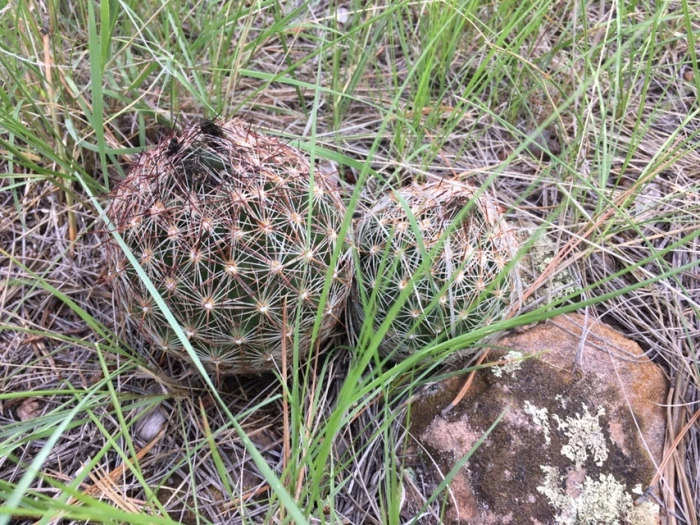Hatchet Cactus
(Pelecyphora vivipara)
Hatchet Cactus (Pelecyphora vivipara)
/
/

weaver
CC BY-SA 4.0
Image By:
weaver
Recorded By:
Copyright:
CC BY-SA 4.0
Copyright Notice:
Photo by: weaver | License Type: CC BY-SA 4.0 | License URL: http://creativecommons.org/licenses/by-sa/4.0/ | Rights Holder: weaver | Publisher: iNaturalist | Date Created: 2022-08-15T21:53:31Z |





















Estimated Native Range
Climate Requirements
| • Precipitation | 4" - 59" |
| • High Temp. | 64°F - 108°F |
| • Low Temp. | -9°F - 65°F |
Summary
Pelecyphora vivipara, commonly known as hatchet cactus or peyote aselliformis, is a small, slow-growing cactus native to North America. Typically, it reaches up to 6 inches in height and forms clusters. The cactus is characterized by its dense covering of star-shaped arrays of white spines that resemble the scales of a pine cone. It produces pink to purple flowers in the spring, which are followed by green, club-shaped fruits. The hatchet cactus is adapted to rocky limestone soils and requires excellent drainage in cultivation.
The hatchet cactus is valued for its unique appearance and is often cultivated by cactus enthusiasts. It is suitable for rock gardens, container gardens, and as a specimen plant in xeriscapes. In cultivation, it requires minimal water, thrives in full sun to partial shade, and prefers a gritty, well-draining soil mix. Due to its rarity and specialized habitat, it is not commonly used in general landscape planting. The hatchet cactus is at risk in the wild due to habitat destruction and overcollection for the ornamental trade. It is listed as threatened in its native range, and cultivation should be done responsibly, preferably from nursery-grown stock to avoid impacting wild populations.CC BY-SA 4.0
The hatchet cactus is valued for its unique appearance and is often cultivated by cactus enthusiasts. It is suitable for rock gardens, container gardens, and as a specimen plant in xeriscapes. In cultivation, it requires minimal water, thrives in full sun to partial shade, and prefers a gritty, well-draining soil mix. Due to its rarity and specialized habitat, it is not commonly used in general landscape planting. The hatchet cactus is at risk in the wild due to habitat destruction and overcollection for the ornamental trade. It is listed as threatened in its native range, and cultivation should be done responsibly, preferably from nursery-grown stock to avoid impacting wild populations.CC BY-SA 4.0
Plant Description
- Plant Type: Succulents
- Height: 0.5-1 feet
- Width: 0.5-1 feet
- Growth Rate: Slow
- Flower Color: Pink
- Flowering Season: Spring
- Leaf Retention: Evergreen
Growth Requirements
- Sun: Full Sun
- Water: Very Low
- Drainage: Fast
Common Uses
Drought Tolerant, Low Maintenance, Potted Plant, Rock Garden, Showy Flowers
Natural Habitat
Semi-desert regions of North America
Other Names
Common Names: Living Rock Cactus , Beehive Cactus , Bisbee Beehive Cactus , Biscuit Cactus , Desert Beehive Cactus , Desert Cactus , Nipple Cactus , Estrella De La Tarde
Scientific Names: Pelecyphora vivipara , ? neomexicana , Cactus neomexicanus , Cactus radiosus , Cactus radiosus var. arizonicus , Cactus radiosus var. deserti , Cactus radiosus var. neomexicanus , Cactus viviparus , Coryphantha aggregata , Coryphantha alversonii var. exaltissima
GBIF Accepted Name: Pelecyphora vivipara